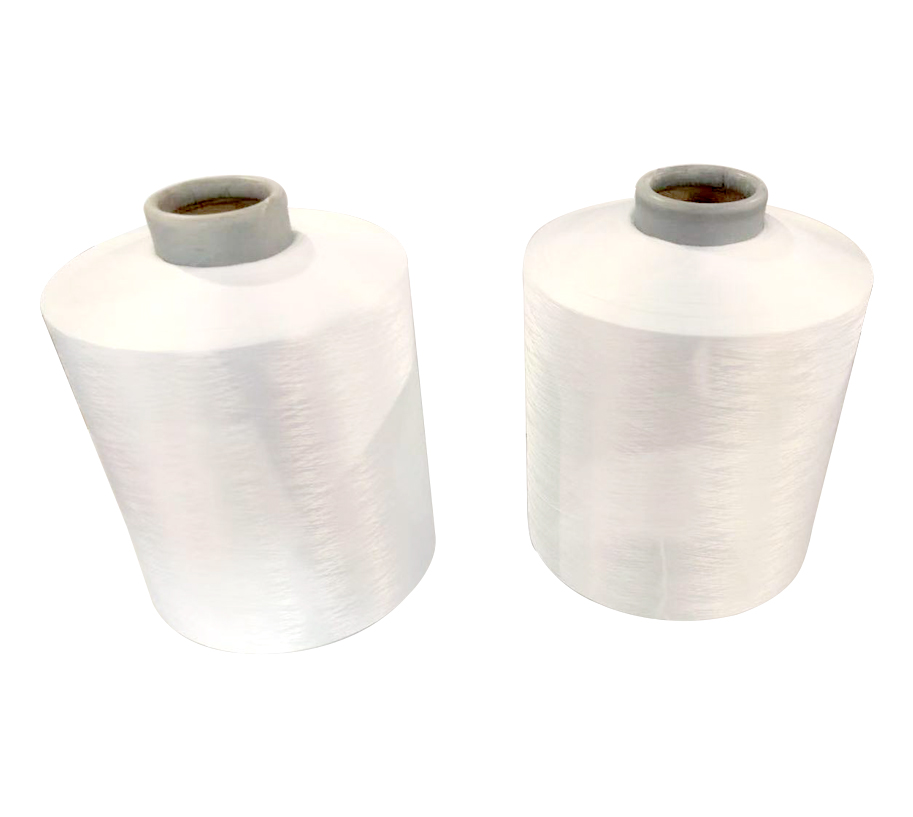Recycled 150D48F RW HIM Polyester Yarn Type: Polyester Yarn Pattern: Raw Technic...
See DetailsThis article covers Polypropylene Draw Texturing Machine and its uses. It also discusses the Physical properties of draw textured yarn and its variations in draw ratios. It concludes with a brief review of the draw yarn manufacturing process. For further information, please refer to the references listed at the end of this article.
Polypropylene Draw Texturing Machine
The Polypropylene draw texturing Machine (PP DTY) is a piece of equipment that twists polypropylene fiber by a physical method and heat treatment. The end product is a yarn with a fine crimp and a low coefficient of friction between interfilament boundaries. Moreover, it produces minimal noise and is fully automatic. The draw texturing Machine is widely used in a variety of applications, including weaving fabric, wrist guard, sweater and Zongzi.

Techniques for drawing textured yarns
There are two common methods for drawing textured yarns. In one method, a single filament of textured yarn is loaded with a 10 mg/De weight and twisted for a minute. This produces an uneven crimp along the length of the yarn. The yarn is then treated in boiling water for 10 minutes. The number of twists produced on a 25 cm length of the middle portion of the yarn is measured with a twist counter.
Another method is drafting. This method results in stretch yarns. Drawing involves drawing a filament over a heated or blunt knife edge. The filament near the knife travels less distance than the outer edges, causing the outer filament to stretch more. This phenomenon is called bilateral compression and extension strain, and the result is a crimpy strand. Drawing also reduces the size of the yarn. A textured yarn obtained by this method is helical in structure and has no twists.
Physical properties of textured yarns
Testing of yarns for the physical properties helps in the selection of raw materials and process control. The system enables the measurement of linear density, crimp rigidity, twist parameters, and unevenness. This system generates print-outs and statistical reports after each group of yarn packages. The system can be installed at the production line, yarn storage area, or quality control laboratory. Several institutions, research centers, and fiber producers have praised its usefulness in their quality control.
In the study, the process temperature influenced the tensile strength of textured yarn samples. Compared to neat PP, blend samples containing three to seven percent LDPE showed higher tensile strength. However, no significant differences were observed between the two types of samples at temperatures above 140degC. However, the tensile strength of blends containing 10% LDPE decreased with increasing percentage of the blend.
Variations of draw ratios for draw textured yarns
In this study, we examined the effect of multiple process variables on the properties of a partially oriented polyester yarn during a simultaneous draw texturing process. While the temperature of the heater, disc spacing, and draw ratio all influenced the yarn properties, other factors had only minor effects. However, the draw ratio was found to have a major influence on the properties of the textured yarn. Moreover, the D/Y ratio showed a lesser physical significance.
As the molecular weight increases, the draw ratio decreases. This limiting value is approximately four for Mw > 106 g mol-1. Interestingly, this behavior is not unique to PEs. A wide range of other polymers exhibit a limited draw ratio. This is known as the natural draw ratio. It is generally higher than the desired draw ratio when the molecular weight of the polymer is low.
Comparison of draw textured yarns with air-jet textured yarns
This article compares the performance of draw and air-jet textured polyester yarns. These types of yarns are similar in terms of tensile strength and breaking extension. Both draw and air-jet textured yarns are characterized by their different colors and texture. Besides, they have different fiber compositions. The draw textured yarn has a higher tensile strength than the air-jet textured yarn, and the latter has a lower bulk.
The physical properties of the textured yarns differ slightly in terms of the draw ratio. The draw ratio of effect yarn is normally lower than the draw ratio of core yarn, which allows for the heat setting of the textured yarn. In the last few years, polyester 86 dtex/f 36 POY yarns have been used for the effect yarn. For this purpose, the draw ratio was changed between 1.65 and 1.82.